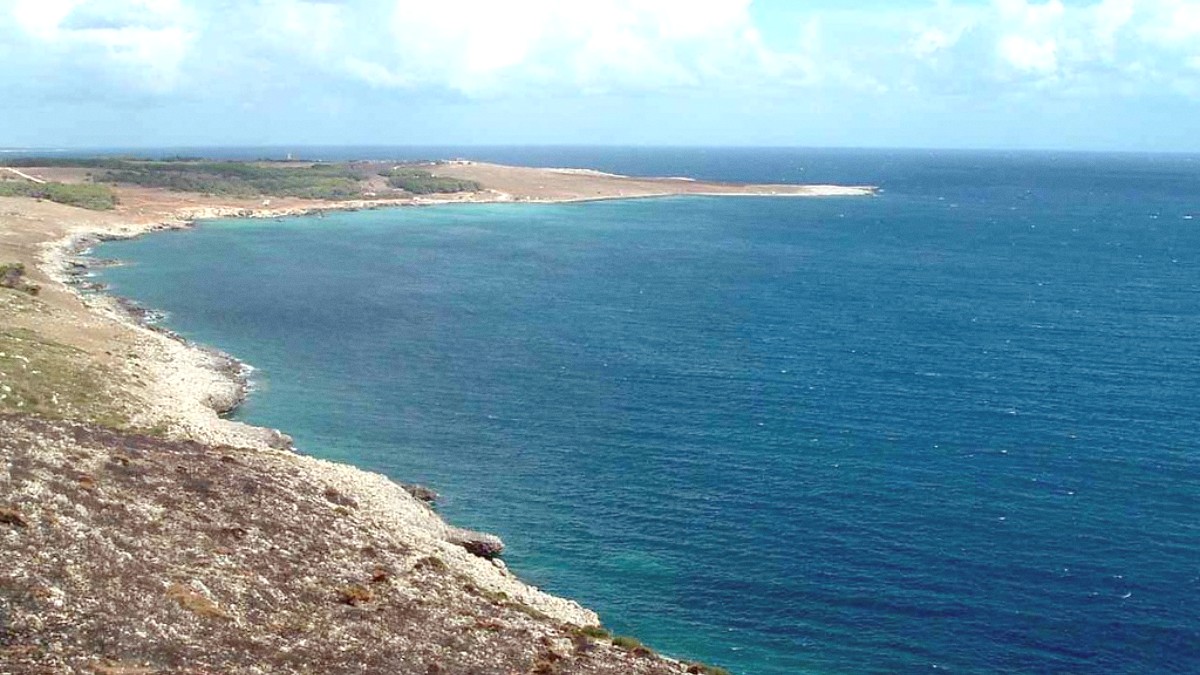
Puglia, Italy
Your journey to Otranto begins with the promise of discovery. Picture yourself strolling through the narrow, winding alleys of its historic center, an UNESCO World Heritage site, where whitewashed buildings gleam under the Puglian sun. Hear the gentle lapping of waves against the city walls, a constant reminder of Otranto's close relationship with the sea. Look up at the formidable Aragonese Castle, a sentinel watching over the harbor for centuries, its stone walls holding tales of sieges and triumphs. Step inside the Otranto Cathedral, and stand before its mosaic floor, a sprawling, intricate masterpiece depicting a Tree of Life that narrates biblical and mythological stories with a surprising, almost whimsical artistry.
Otranto invites you to slow down and embrace the local pace of life. Savor the simplicity and freshness of Puglian cuisine in charming trattorias, where olive oil, fresh seafood, and locally grown vegetables form the basis of every delicious meal. Experience the warmth of local hospitality in family-run bed and breakfasts.
Participate in the evening passeggiata, a cherished Italian tradition of leisurely strolls before dinner, where the town truly comes alive with laughter and conversation.
Otranto is a distinct and strategic position within the heel of Italy's boot, the region of Puglia. This town sits squarely on the Adriatic coast of the Salento Peninsula, the southernmost part of Puglia. Its location makes it the easternmost town in Italy, a geographical marker that has shaped its history and character for millennia. The town faces directly across the Adriatic Sea towards the Balkan Peninsula and Greece, a geographical reality that fostered ancient trade routes and cultural exchanges.
The Salento Peninsula, where Otranto lies, is a distinct sub-region of Puglia. It is characterized by its drier, sunnier climate, its unique local dialect (Salentino), and its rich tradition of folk music, notably the pizzica. The peninsula's shape, a narrow strip of land separating the Adriatic Sea to the east from the Ionian Sea to the west, means that both coasts are readily accessible. From Otranto, the Ionian coast, with its different beaches and towns like Gallipoli, is only an hour's drive away, allowing visitors to experience the distinct characters of both seas within a single trip.
A system of two coastal lakes, a protected natural area with biodiversity and water sports.
Italy's easternmost point, known for the first sunrise on the Italian coast.
A nature park with dramatic cliffs, pine forests, and unique flora and fauna.
The town is built around a natural harbor, a safe haven for centuries.
A mix of low-lying cliffs, sandy beaches, and ancient olive groves.
Puglia, the region Otranto belongs to, stretches along more than 800 kilometers of coastline, marking it Italy's longest coastal region. It is known for its relatively flat and fertile plains, dominated by vast olive groves that produce a significant portion of Italy's olive oil.
Otranto's immediate surroundings include a varied natural landscape. North of the town, the Alimini Lakes, a system of two coastal lakes, comprise a protected natural area known for its biodiversity and opportunities for water sports.
South of Otranto, the coastline becomes more rugged, featuring small, picturesque coves, sea caves, and a nature park, the Parco Naturale Regionale Costa Otranto – Santa Maria di Leuca e Bosco di Tricase. This park shields a stretch of dramatic cliffs, pine forests, and endemic flora and fauna, delivering numerous walking paths and scenic viewpoints.
This blend of ancient fortified town, modern amenities, and diverse natural landscapes makes Otranto a microcosm of what Puglia has, combining historical depth with natural beauty and seaside appeal.
Otranto's history is long and eventful, deeply shaped by its strategic geographical position as Italy's eastern gateway. This town has witnessed the rise and fall of empires, serving as a crossroads of cultures and a battleground for civilizations. Its origins date back to the Bronze Age, with evidence of early settlements around the Alimini Lakes. Later, it became a Messapian settlement, an ancient Italic tribe, before falling under Roman influence. As the Roman "Hydruntum," it grew into an important port, connecting the Roman Empire with the East. Roman roads, like the Via Traiana, extended to Otranto, underscoring its connectivity.
The Byzantine era, beginning in the 6th century AD, left an enduring mark on Otranto. For centuries, it remained a stronghold of Byzantine culture and religion, even after much of Southern Italy fell to other powers. This period saw the construction of the small, charming Church of San Pietro, with its surviving frescoes, and established Otranto as a center of Greek Orthodox Christianity.
Otranto remained a stronghold of Byzantine culture for centuries, visible in its architecture and traditions.
In the 11th century, Normans conquered Puglia, integrating Otranto, leading to the construction of the Cathedral.
A brutal invasion led to the martyrdom of over 800 citizens, a poignant moment in Italian history.
After the Ottoman occupation, Otranto was quickly retaken by Alfonso of Aragon, who extensively rebuilt and fortified the town. The formidable Aragonese Castle, with its imposing walls and towers, largely dates from this period of reconstruction, designed to prevent future invasions.
Explore the UNESCO historic center, Otranto Cathedral's mosaic floor, and the Aragonese Castle.
Enjoy city beaches like Spiaggia degli Scaloni or pristine Baia dei Turchi and other coves.
Savor fresh seafood, local orecchiette, pasticciotto, and regional wines.
Visit in the late afternoon for beautiful golden hour light on its walls and views over the harbor.
Spend time admiring the intricate 12th-century mosaic floor, a storytelling masterpiece.
Savor fresh seafood and local pasta dishes at a traditional trattoria.